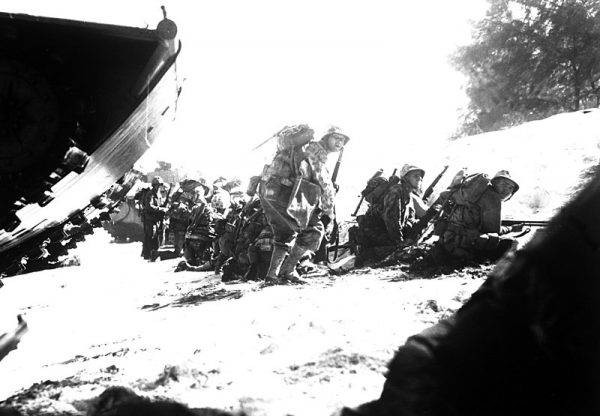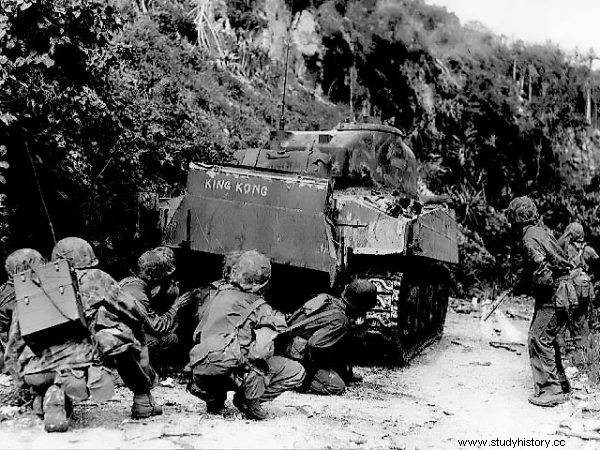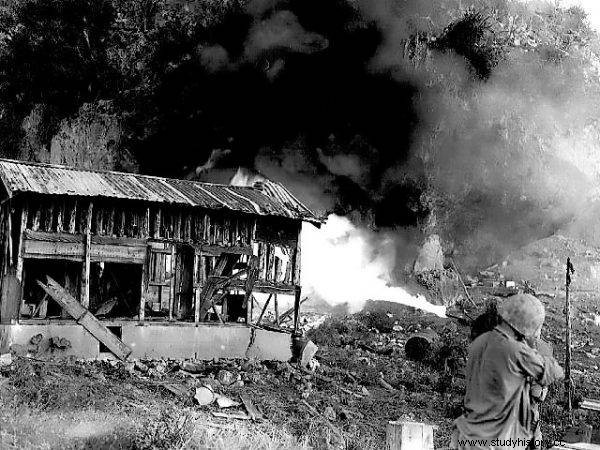Is it possible that ... a dentist could reach for the highest military decoration in the US Army? Of course! The more so because he deserved it. The only scandalous thing is that it was only granted 60 years after his death.
Ben Solomon, because we are talking about him, was born on September 1, 1914 in Milwaukee, Wisconsin. Then he moved to Los Angeles, where he enrolled at the University of California. In 1937 he started practicing as a dentist.
Three years later, he was drafted into the army and, after a basic course, was included in the 102nd Infantry Regiment. From the beginning, he showed a predisposition to be a good soldier and a natural leader. He even received an award for his excellent rifle handling skills. After a year of service, he rose to the rank of sergeant and commanded the machine gun section.
"We will overtake the enemy's attack and die an honorable death"
In 1942, Ben Salomon was assigned an officer assignment to the Corps of Dentists. Initially, he remained in the infantry, where he was promoted to the rank of second lieutenant. In August, with his promotion to lieutenant, he was ordered to go to Hawaii. Despite the fact that the dental practice gave him great satisfaction, he was unable to part with the military:in the afternoons he put on a uniform and participated in special training. He stayed in Hawaii until May 1943, working in a hospital. Then, as a dentist officer, he was drafted into the 105th Infantry Regiment, part of the 27th Infantry Division.
His career progressed rapidly and in June 1944 he was given the rank of captain. He and his 105th regiment went to the quay of Saipan, the largest island of the Northern Mariana Islands. He worked there in his specialization, but when he received information that one of the surgeons from the 2nd Battalion had been injured, he volunteered to replace it. He made it a point of honor to become the best surgeon he has ever served in this battalion.

Marines' first throw at Saipanu Beach
From June 27, this unit secured the Nafutan peninsula. On July 4, command issued an order that troops clear the Saipan area. Consequently, the infantry found themselves on a bare beach just outside the village of Tanapag. The battalion broke into the island more than 700 meters, but every now and then faced fierce defense from the Japanese. The Americans managed to establish that the opponents were planning a night-time counterattack, and therefore began to prepare the defense and dig in under the cover of heavy artillery.
On the evening of July 6, General Yoshitsugo Saito gave his men (there were 5-6 thousand on the island) an order: We will advance the enemy attack and die an honorable death. We'll all kill 10 Americans. ” . Around 5 am the next day, the Japanese shouted "Banzai!" on the lips they rushed to the American fortifications. Major Edward McCarthy described the offensive as follows:
The attack looked like it was out of a Wild West movie:you killed one and five more appeared. The Japanese were coming and they were coming and there was no end to them!
The artillery did its job, causing great casualties among the attackers in the first wave of the attack, but nevertheless numerous groups of Japanese troops advanced closer and closer. The distance of the artillery shots had to be shortened to less than 70 meters - dangerously close to their own positions. The American Navy stationed on the waterfront illuminated the area with numerous flares and shelled the enemy's rear. However, the Japanese broke almost 50 meters deep into the fortifications.
The last line of defense
Ben Solomon had his hands full. More and more wounded were pouring into his hospital tent. At one point, there were so many of them that he had to make selections:he put those with less serious injuries outside.
Suddenly he heard a shrill scream, and after a while he noticed that a Japanese appeared in the corner of the tent, plunging his bayonet into the body of the wounded American. It was at this point Solomon realized that he and his team were the patients' last line of defense . Wasting no time, he grabbed the M1 semi-automatic rifle on a nearby table and shot the enemy soldier.

The last fights in North Saipan. The Marines hide behind the M4 Sherman tank from enemy fire
Meanwhile, two more have already appeared in the main entrance to the tent. The dentist punched the first one with his fist and hit the other one over the head with the handle of the rifle. He immediately reached the stunned enemies and killed both of them. Four more Japanese tried to approach Solomon by surprise. One of them had a knife in his hand. As he approached the doctor, he knocked off his gun and fired a shot. Then he intercepted his bayonet and defeated the other opponents.
Then he realized that he had run out of ammunition. Driven by his survival instinct, he grabbed the knife and attacked the enemies who had just burst into the tent. He managed to immobilize the first one right away. He grabbed the other's head and started hitting the floor with it. Luckily for Solomon, at one point one of the patients fired on the Japanese, killing him on the spot.
Taking advantage of the moment of peace, the dentist ordered the wounded evacuated . Sam remained at the post, securing the rear . He reloaded his weapon and continued to fight the attacking Japanese. He was the last person to be seen in the tent - later he was not heard of.
"The whole area felt like a mass grave"
The Japanese attack turned out to be a total disaster. Almost the entire advancing army was killed. American soldiers described the post-battle painting as macabre. Northwest Saipan was literally littered with the bodies of the Japanese.
A war correspondent noted:"The entire area appeared to be a mass grave with parts of flesh, bones and brain bits strewn across it." The 27th Division counted 4,311 enemies killed. It was necessary to act as soon as possible to prevent an epidemic. Special graves were created into which 20-30 bodies were placed. The situation was so critical that the Americans were forced to use bulldozers.

The flame thrower in action. M1A1 flame throwers were used from June 1943
In front of the 2nd Battalion outpost, Captain Solomon was also found among the many bodies. The sleeves of his shirt were rolled up to the elbows, and his body was hunched over under the weight of the machine gun, which he had to capture outside and from which he shielded the retreating wounded. The ammunition in his gun was almost completely exhausted. There were as many as 98 bodies of Japanese soldiers around him!
An investigation by officer Stephen Burns in charge of the counting of the dead and historian Edmund G. Love found that the dentist had received 76 bullet wounds, 24 of them before he died. In raporci Love wrote:
It is easy to deduce that a wounded and bleeding Ben Salomon tried to move the gun a few meters away to get a new and better field of fire . The blood was soaked into the soil, and the wounds on his body indicate how difficult the task must have been, especially in the last moments of his life.
Despite Love's painstaking efforts, he failed to find any witnesses from the ward who would be able to confirm the heroic feat of the doctor. However, he sought out and questioned three men who had served with Solomon in the tent, who had seen him fight and then obtained a machine gun.
On the basis of these testimonies and the number of the bodies of the enemies found on the heroic dentist's body, Love applied for the award of the highest American decoration, the Medal of Honor. However, General Griner, who received the petition, rejected it. He was afraid that the manner in which Solomon, as a medic, used weapons was in breach of the Geneva Convention. In the justification he wrote:"I am very sorry that I cannot accept the application for the decoration, especially considering how much he deserved it."
However, the general was wrong - the Geneva Convention of 1929 allowed medics to use weapons when they needed to defend themselves or their patients. Nevertheless, Solomon's nomination was postponed for many years - until 2001! On May 1, at the White House Rose Garden, Dr. Robert West, who also served as a dentist during World War II, received the Ben Solomon Medal of Honor from President George W. Bush. It ended up in the military dentists' corps as the doctor's last relative, his father, died in 1970. Ben Salomon was thus the only dentist who received the highest military decoration.
